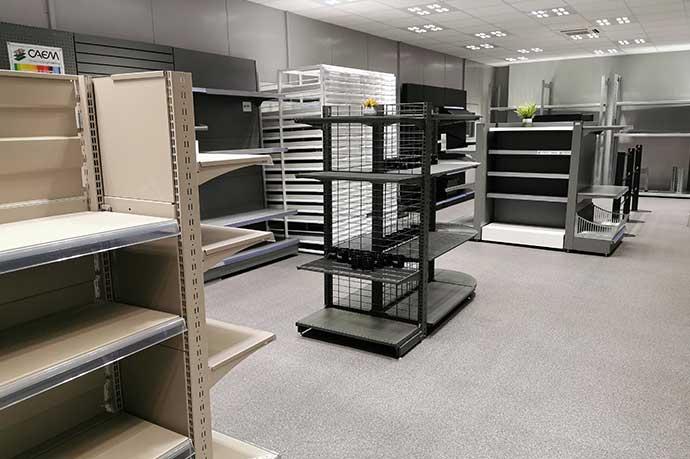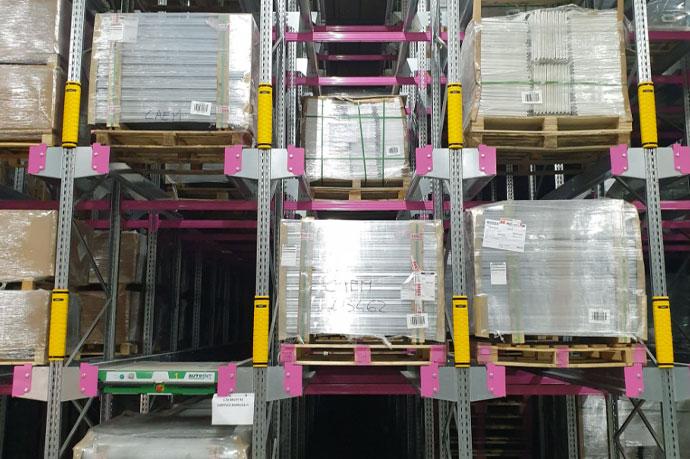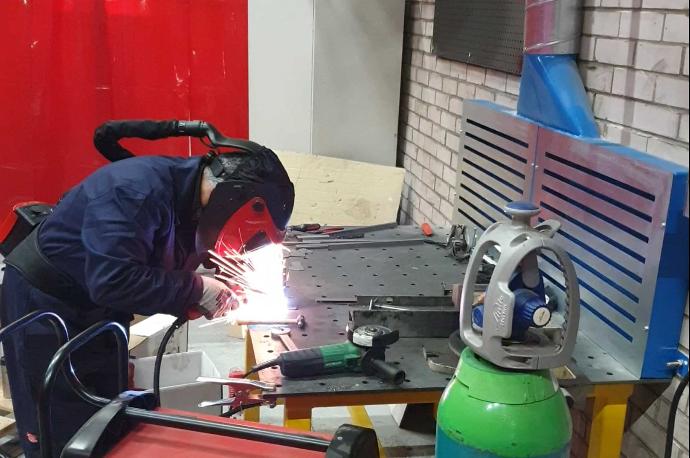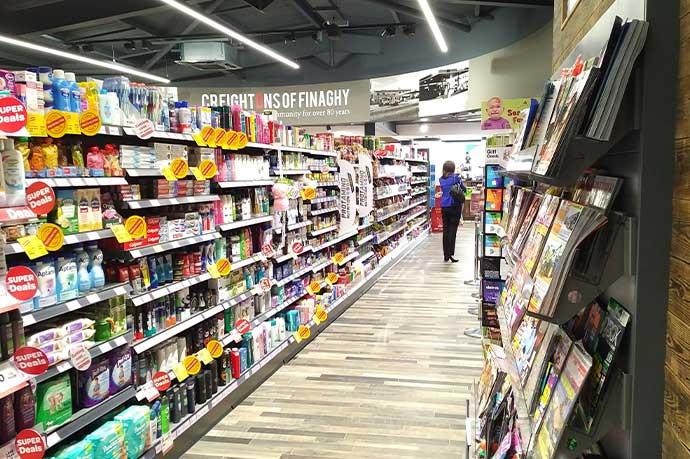Shopfitting for Food Retailers – Modular Shelving and Custom Displays
Stepping into a well-designed food retail space, most customers never realise the strategic thought and innovation behind every shelf, display, and light fitting. For food retailers, the art and science of shopfitting can be the difference between a store that merely serves and one that inspires loyalty, maximises sales, and reflects the essence of the brand. In this article, we explore how modular shelving and custom displays shape modern food retail environments, drawing on decades of expertise and the latest industry data.
Introduction to Shopfitting for Food Retailers
Understanding the Importance of Shopfitting in Retail
Shopfitting for food retailers is about far more than arranging products on shelves. It is a disciplined blend of aesthetics and function, aimed at making every square metre work harder for both customer and retailer. The right retail shelving units not only present goods attractively but also streamline store operations and improve durability, reducing maintenance over time. A thoughtfully fitted shop increases dwell time, guides customer behaviour, and ultimately boosts sales by making the shopping experience smooth and intuitive.
Overview of Market Trends and Consumer Preferences
Food retail is undergoing dynamic transformation, driven by evolving shopper expectations and rapid advances in technology. Retailers are embracing modular, flexible shop fittings to adapt quickly to seasonal changes and promotional needs. There's a noticeable shift toward eco-friendly materials and sustainable practices as brands respond to consumer demand for greener options and stricter environmental regulations. Customers expect not just convenience but engaging, visually cohesive spaces that reflect the retailer's brand identity.
Industry growth projections reinforce these shifts. The global shop fitting materials market is set to reach USD 142.5 billion in 2025, growing at a 5.2% CAGR, with Europe holding a significant share. Meanwhile, the global food retail market is valued at up to USD 12.49 trillion in 2024 and expected to grow steadily, fuelled by changing consumer habits and a focus on convenience and healthier choices.
Key Elements of Effective Food Retail Shopfitting
Designing for Optimal Customer Flow
Every successful food retailer understands that the journey through the store is as important as the products on offer. Logical and intuitive category flow—grouping related items like cereals with spreads—makes shopping easier and encourages longer visits. Open pathways and clear sightlines, achieved through careful placement of retail store fixtures, prevent congestion and help shoppers navigate effortlessly from entrance to checkout. Modular shelving systems, such as CAEM's M25 and S50, allow for agile reconfiguration, supporting continuous improvement as stock and customer needs evolve.
Importance of Lighting in Food Retail Spaces
Lighting is one of the most powerful tools in a retailer's arsenal. The right lighting draws attention to key displays, enhances the freshness of produce, and shapes the overall atmosphere. Recent industry research demonstrates significant impact: stores with sales uplifts ranging from 8% to 12% following upgrades to LED and adaptive lighting systems have become increasingly common. Customers spend approximately 11% more on average in stores with dim and warm-colored lighting paired with other sensory enhancements. Even targeted strategies like well-placed checkout counter merchandise show sales increases of up to 30% for certain categories, attributed to last-minute impulse purchases enhanced by strategic lighting placement.
Choosing Appropriate Shelving and Display Units
Selecting the right shelving and display units is fundamental to both the look and function of a food retail space. Adjustable, modular shelving—such as CAEM's M25 system with its precise 25mm slot pitch—allows for optimal use of vertical space and more product facings per linear metre. Durable materials, like tubular steel profiles, ensure longevity even in high-traffic environments. The S50 system's compatibility with standard 50mm slot shelving means phased upgrades and expansions are straightforward, supporting a retailer's growth without costly overhauls. Bespoke displays and gondola shelving, such as the TN9 and M25 systems, can be tailored in colour, finish, and accessories, reinforcing brand identity while maximising product visibility.
Strategies for Space Maximisation and Inventory Management
Maximising space is a balancing act between accessibility and capacity. Vertical storage and compact shelving help make the most of every corner, while modular displays support seasonal changes and promotions without major disruption. Retailers want flexible, modular displays and fixtures—able to be quickly reconfigured for product launches, seasonal displays, and changing consumer flows. CAEM's modular approach, combined with rapid prototyping and 3D design consultation, ensures each solution is tailored to the specific needs of the retailer and their space.
Customising Shopfitting to Enhance Brand Experience
Integrating Branding and Visual Merchandising
Shopfitting is a powerful vehicle for brand storytelling. Cohesive colour schemes, bespoke fixtures, and coordinated signage all contribute to a memorable and immersive environment. CAEM's in-house powder coating facilities offer over 15 standard colours and 150+ architectural finishes, enabling retailers to match shelving and displays precisely to their brand palette. Visual merchandising is woven into every detail, from the choice of materials to the configuration of display units, ensuring consistency and reinforcing customer loyalty.
Utilising Signage and Awnings for Branding
Signage and awnings are often the first point of contact with potential customers. Well-designed, integrated signage not only improves wayfinding but also highlights key product zones and promotions. Branded awnings add curb appeal and strengthen the retailer's presence on the high street. CAEM's emphasis on custom shop display fittings and brand-calibrated store fixtures means that signage can be seamlessly incorporated into the overall shopfitting scheme, ensuring a professional, cohesive appearance.
Case Studies of Successful Food Retail Environments
Real-world examples from 2022-2024 demonstrate the measurable impact of innovative shopfitting approaches. Story in New York City reinvented the concept store format, embracing a "point of view of a magazine, changes like a gallery, sells like a store" philosophy. By completely reinventing its layout, theme, and inventory every few weeks, the store achieved significant increases in return visits and in-store dwell time as shoppers explored frequently changed layouts and themes.
Multiple chains implementing immersive experiential grocery formats reported substantial results. Stores utilizing sensory stimulation tactics—including aromas from bakeries, vibrant produce displays, and live tasting stations—saw basket size growth of 8–15% compared to control stores. These redesigned front-of-store areas featuring bakery aromas and colorful produce achieved significant increases in dwell time, with payback periods often under 18 months when paired with targeted promotions.
Several independent food retailers demonstrated the power of sophisticated minimalism in grocery presentation. By transitioning from overstocked shelves to curated product displays with fewer items and emphasis on presentation, natural lighting, and clean layouts, these stores achieved increases of up to 20% in sales per square foot after switching to curated, high-turnover displays. Customer surveys indicated stores were perceived as "easier to shop" and "more enjoyable," with investments recouped within 12-18 months due to higher sales and lower inventory carrying costs.
Practical Considerations and Challenges
Project Management and Timeline Coordination
Delivering a seamless fit-out requires meticulous project management. From initial consultation and 3D design validation to manufacturing and installation, each phase must be carefully coordinated to avoid delays. Supply chain disruptions, labour shortages, and rising material costs are persistent challenges, but agile scheduling and phased rollouts help mitigate these risks. CAEM's in-house manufacturing and rapid prototyping capabilities allow for fast lead times—even for bespoke solutions—keeping projects on track despite external pressures.
Ensuring Regulatory Compliance and Safety Standards
Food retail environments are subject to strict regulations, covering everything from food safety and hygiene to building codes and labelling. Recent changes, such as 'Not for EU' labelling and restrictions on HFSS product placement, add layers of complexity. Consumers are becoming increasingly health-conscious, leading to growing demand for healthier and plant-based food options, which influences store layouts and product placement. Collaborating with experienced shopfitting companies like CAEM ensures all retail shopfittings meet legal requirements, with quality checks and regular inspections built into the process.
Minimising Operational Downtime During Fit-outs
Downtime during renovations can impact revenue and customer loyalty. Efficient planning, prefabricated components, and modular construction methods reduce installation time and disruption. CAEM's calibrated stock holding and rapid delivery mean standard shelving systems can be supplied in as little as seven working days, supporting ambitious rollout plans and minimising operational impact. Clear communication with staff and customers helps manage expectations and maintain positive relationships throughout the fit-out process.
Future of Shopfitting for Food Retailers
Innovations in Shopfitting Technology
Technological innovation is reshaping the future of shopfitting for food retailers. The grocery industry pushed aggressively on the omnichannel front in 2024 as retailers embraced technology for in-store experiences and refined their approach to serving shoppers online. Notable innovations include Sam's Club's major play on in-store innovation with a Scan & Go-only location featuring a pizza-making robot and several e-commerce fulfillment tools. CAEM's commitment to advanced in-house machinery, such as automated laser cutting and 3D CAD visualisation, positions it at the forefront of these trends.
Sustainable Materials and Eco-Friendly Practices
Sustainability is no longer optional; it is central to modern shopfitting. Retail accounts for a quarter of global greenhouse gas emissions, with material choices playing a significant role. Retailers are prioritising recycled and renewable materials, low-VOC finishes, and energy-efficient lighting, as highlighted by sustainable materials and circular economy practices. 73% of Consumer Industry CXOs increased investments in sustainability last year, reflecting both regulatory pressures and consumer demand. CAEM has reduced plastic consumption by 80%, offset thousands of tonnes of CO2, and uses solar panels and energy-efficient processes in its UK manufacturing operations, underlining its commitment to a greener future.
Predictions for Emerging Trends and Customer Preferences
Industry experts predict significant shifts ahead. Denise Purcell, Vice President of Resource Development at the Specialty Food Association, emphasises the importance of experience-driven design in food retail environments. The next wave of shopfitting will focus on experiential retail, blending shopping with social and sensory experiences. Personalisation and customisation—both in shop display fittings and the overall layout—will become standard, driven by data and brand storytelling. Omnichannel integration, where digital and physical experiences merge, will shape design choices. Flexibility, efficiency, and sustainability will remain at the core, as retailers seek to future-proof their spaces against ongoing change.
Conclusion and Next Steps
Summary of Key Takeaways
Shopfitting for food retailers is a strategic discipline that shapes both the customer journey and business outcomes. Modular shelving and custom displays offer the flexibility and efficiency needed to adapt to changing demands, while thoughtful integration of lighting, signage, and branding elevates the in-store experience. Success depends on expert project management, rigorous compliance, and a commitment to innovation and sustainability.
Engaging a Shopfitting Expert for Your Food Retail Space
Partnering with a trusted expert like CAEM ensures that every aspect of your shopfitting project is handled with precision, from concept and 3D design to manufacturing and installation. With decades of experience, in-house UK manufacturing, and a collaborative, client-centric approach, CAEM delivers tailored solutions that reflect your brand, support operational goals, and prepare your store for the future. Engaging the right partner unlocks the full potential of your retail space, delivering lasting value and a competitive edge in a rapidly evolving market.





